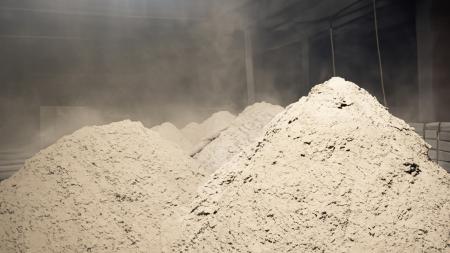Dust formation and the risk of explosion are directly related. This article discusses:
- Dust formation and explosion hazard are related
- How dust formation occurs
- When the risk of explosion is greatest
- What are the options for preventing explosions
The experts at Dinnissen Process Technology are available to answer all your questions:
Get in touch with Juul Jenneskens 077 467 3555
Dust formation and the link with explosion hazard
Dust formation is not a good thing in the processing of powders. It has a lot of negative consequences: it is nog good for the health of employees, it causes extra material loss and it results in extra maintenance of equipment and installations. Moreover, it does not improve the appearance of the powder. But how and when does dust formation occur? And most importantly, is it preventable?
Dust formation is the result of very small dust particles floating around in the air during processing. But not only that, the dust also finds its way out through small openings in machine channels, a kind of leaks, through which it ends up in the air. In addition, dust formation occurs when agglomerates in the powder disintegrate and pulverize again. Little can be done against all these causes. Dust formation can never be completely prevented. However, it can be reduced by agglomeration and dust recirculation in the powder production process.

Dust formation
When is the greatest risk of explosion and how can it be prevented
Too much dust formation within the process entails one very big risk: dust explosions. It is a danger for employees who work with spray drying installations or storage silos, because these are the places where the chance of a dust explosion is greatest.
When the powder particles rub next to each other in, for example, a down pipe, a static charge can arise. This, in combination with sufficient oxygen, are the ideal conditions for a dust explosion. The explosion starts small with one particle detonating, but develops into a chain reaction in which every other particle reacts on its own to combustion. Ultimately, this leads to a major dust explosion. How great the actual danger of a dust explosion is, therefore, depends on the oxidation rate and the dust concentration. The risk of a dust explosion is greatest when the concentration of dust in the air has reached a critically high level and when the temperature is so high that it has reached the flammability limit.
In fact, every powder has a minimum explosive dust concentration. For powders from the food industry, the minimum explosive dust concentration is 20 grams per cubic meter. The concentration of dust in dryers and in pipes actually always exceeds this limit, which means that there is always a risk of ignition and thus the risk of explosion. The drying chamber is an extra concern, because it is more prone to explosions as the high temperature can cause spontaneous combustion.
To reduce the risk of dust explosions in the drying chamber, all drying chambers are now equipped with ventilation openings to prevent the build-up of excessive pressure. In addition, they are equipped with advanced systems that keep the pressure in the drying chambers under control. In addition, there are two other ways to prevent dust explosions in the drying chamber:
- Connect interlocks to the spray dryer control to ensure exhaust air and product temperatures are within safe limits.
- Always treat or dry products with highly flammable materials with, for example, nitrogen.
Dust formation is the result of very small dust particles floating around in the air during processing

Name: Juul Jenneskens
Advisor
Please feel free to contact me if you have any questions about this subject. My team of colleagues and I are ready to answer!
Get in touch with Juul Jenneskens 077 467 3555 [email protected]
Do you prefer to request a consultation directly?
